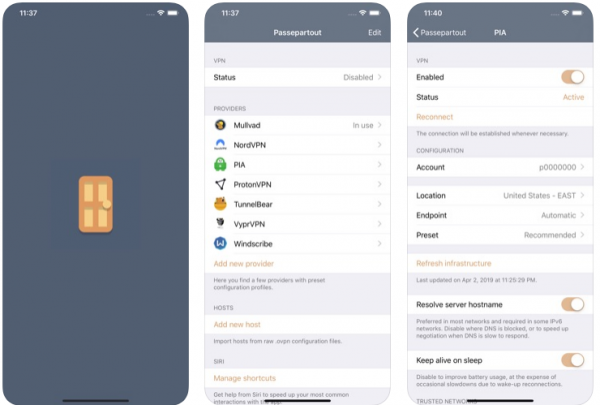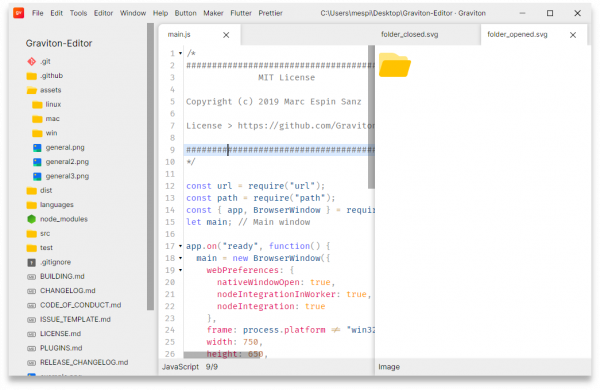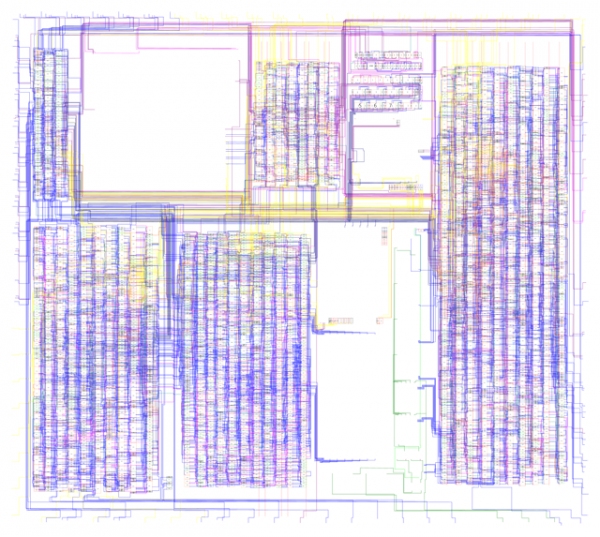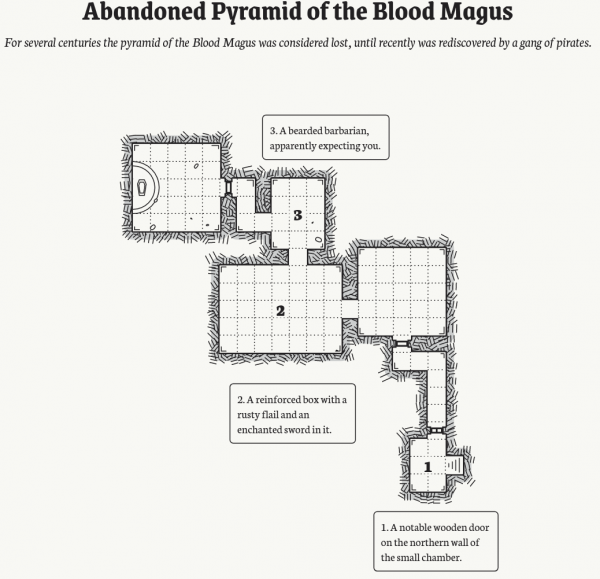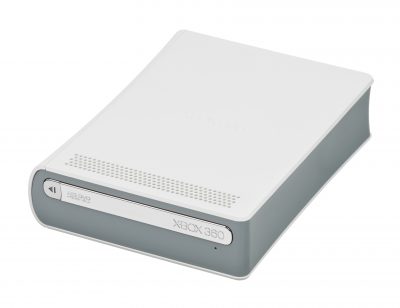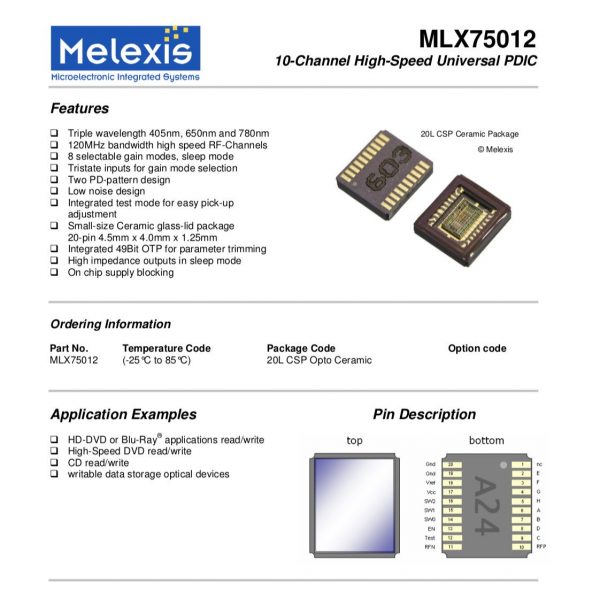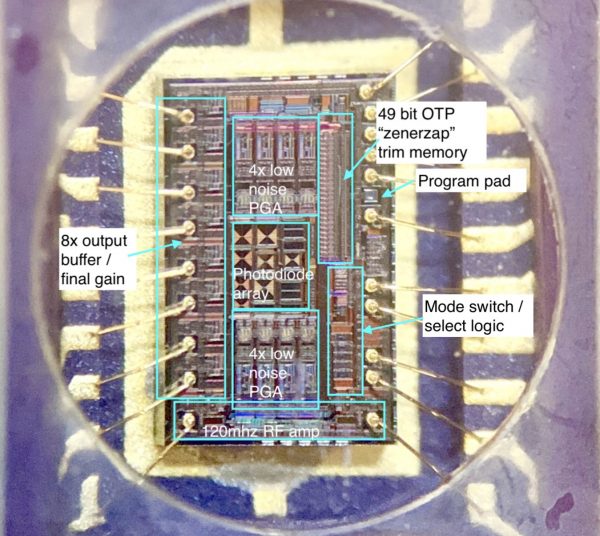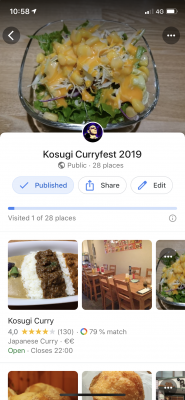
Hack-The-Planet Podcast: Episode 12
Japan November 2019: Day 1
…and the heart beats faster.
OpenFood Facts

To replace MyFitnessPal in our toolchain I am on the hunt for at least some quality food fact data.
The Open Food Facts data base seems to be one source – although in sparse and questionable quality (after first initial testing).
There is a comprehensive documentation about the fields of data supported. And there are several formats that the raw data can be downloaded in.
There are ready-made applications available as well. Definitly worth looking into further.
smart OpenVPN client for iOS
There is a free and well integrated OpenVPN client for iOS devices already. And as much as this one works quite well it’s also lacking some comfort features that are now made available through alternative iOS client implementations of OpenVPN.
OpenVPN is an open-source commercial software that implements virtual private network techniques to create secure point-to-point or site-to-site connections in routed or bridged configurations and remote access facilities. It uses a custom security protocol that utilizes SSL/TLS for key exchange.
https://en.wikipedia.org/wiki/OpenVPN
Meet Passepartout. The iOS OpenVPN client that comes with lots of comfort features. Of main interest for me is that Passepartout is aware of the connection you’re currently using and can adopt it’s VPN tunnel status accordingly.
Passepartout is a smart OpenVPN client perfectly integrated with the iOS platform. Passepartout is the only app you need for both well-known OpenVPN providers and your personal OpenVPN servers.
collection of pure bash alternatives to external processes
The goal of this book is to document commonly-known and lesser-known methods of doing various tasks using only built-in
https://github.com/dylanaraps/pure-bash-biblebashfeatures. Using the snippets from this bible can help remove unneeded dependencies from scripts and in most cases make them faster. I came across these tips and discovered a few while developing neofetch, pxltrm and other smaller projects.
Graviton: another javascript based code editor
the big list of RTL-SDR supported software
RTL-SDR is a very cheap ~$25 USB dongle that can be used as a computer based radio scanner for receiving live radio signals in your area (no internet required). Depending on the particular model it could receive frequencies from 500 kHz up to 1.75 GHz. Most software for the RTL-SDR is also community developed, and provided free of charge.
The origins of RTL-SDR stem from mass produced DVB-T TV tuner dongles that were based on the RTL2832U chipset. With the combined efforts of Antti Palosaari, Eric Fry and Osmocom (in particular Steve Markgraf) it was found that the raw I/Q data on the RTL2832U chipset could be accessed directly, which allowed the DVB-T TV tuner to be converted into a wideband software defined radio via a custom software driver developed by Steve Markgraf. If you’ve ever enjoyed the RTL-SDR project please consider donating to Osmocom via Open Collective as they are the ones who developed the drivers and brought RTL-SDR to life.
https://www.rtl-sdr.com/about-rtl-sdr/
And since the hardware is so affordable there’s lots of software and therefore things that can be done with it.
reverse engineered Gameboy CPU
This repo contains an annotated overlay for the Nintendo Game Boy DMG-CPU-B chip die and the extracted schematics.
This was done manually with only a few automated checks so THERE’S A HIGH RISK OF ERRORS. I’m in no way responsible if you made someone’s life depend on this and it fucked up.
https://github.com/furrtek/DMG-CPU-Inside
procedural dungeon map generator
There are lots of inputs into the “procedural generation contest” – yet this one, as yesterdays, is worth a mention:
Google Maps now allows offline maps for Japan (!!!)
For years now Google Maps did not allow us to download Offline Maps for Japan. It is an extremely useful feature when you are out and about and you might not yet have full mobile coverage or your plan is not set-up yet.
A week ago this was not possible and I have just now noticed that you can now select the Japan area for a custom offline map in the Google Maps app on my iPhone and on my iPad.
This is great news! Do you use the offline map feature?
procedurally generated cities
This application generates a random medieval city layout of a requested size. The generation method is rather arbitrary, the goal is to produce a nice looking map, not an accurate model of a city. Maybe in the future I’ll use its code as a basis for some game or maybe not.
Medieval Fantasy City Generator
Affsloth
The 27th Day of the Season of The Aftermath, aka The Day of the Sloth.
turn an Xbox 360 HD-DVD drive into an Fluorescent Scanning Thermal Microscope (FSTM)
Curtesy of Sam Zeloof I came around the fact that I’ve got a good part of a FSTM in a cupboard here.
Apparently my choice of purchasing the HD-DVD drive for the Xbox 360 will ultimately pay off!! As we all know Bluray won that format war back in the days.
But now it seems that this below would be useable for something:
Over the life of nuclear fuel, inhomogeneous structures develop, negatively impacting thermal properties. New fuels are under development, but require more accurate knowledge of how the properties change to model performance and determine safe operational conditions.
Measurement systems capable of small–scale, pointwise thermal property measurements and low cost are necessary to measure these properties and integrate into hot cells where electronics are likely to fail during fuel investigation. This project develops a cheaper, smaller, and easily replaceable Fluorescent Scanning Thermal Microscope (FSTM) using the blue laser and focusing circuitry from an Xbox HD-DVD player.
The Design, Construction, and Thermal Diffusivity Measurements of the Fluorescent Scanning Thermal Microscope (FSTM)
As mentioned, Sam Zeloof shows off the actual chip in more detail:
How long does it take a MegaDrive to calculate a MD5 hash collision?
Streamsheets
Streamsheets is, similar to NodeRed, a tool to step in between MQTT data coming in and something being done with it. Just other than NodeRed it is not based on flows but on a spreadsheet that executes in it’s entirety everytime a step is made.
Streamsheets are a new spreadsheet technology specifically designed for real-time data stream processing and the opportunities of digitization and the Industrial IoT.
Streamsheets
SwiftUI on the Web
SwiftUI is the new cool kid on the block when it comes to iOS/iPadOS/macOS application development.
As Apple announced SwiftUI early 2019 it’s naturally only focussing on making all the declarative UI goodness available for the Apple operating systems. No non-apple platforms in focus. Naturally.
But there are ways. With the declarative way of creating user interfaces one apparently can simply start to re-implement the UI controls and have them render as HTML / Javascript…
The SwiftWebUI project is aiming to do so:
Unlike some other efforts this doesn’t just render SwiftUI Views as HTML. It also sets up a connection between the browser and the code hosted in the Swift server, allowing for interaction – buttons, pickers, steppers, lists, navigation, you get it all!
In other words: SwiftWebUI is an implementation of (many but not all parts of) the SwiftUI API for the browser.
To repeat the Disclaimer: This is a toy project! Do not use for production. Use it to learn more about SwiftUI and its inner workings.
SwiftWebUI
Making a RISC-V operating system using Rust
As RISC-V progressively challenges the existing ARM processor ecosystem it’s interesting to see more and more software projects popping up that aim that RISC-V architecture.
Here’s one project that aims to develop (and explain along the way) how to create an operating system from scratch. On top of the RISC-V specifics this tutorial also aims to teach how this all can be done in a programming language called Rust.
Keep in mind that all of this is done on a baremetal system. No other software is running.
RISC-V (“risk five”) and the Rust programming language both start with an R, so naturally they fit together. In this blog, we will write an operating system targeting the RISC-V architecture in Rust (mostly). If you have a sane development environment for RISC-V, you can skip the setup parts right to bootloading. Otherwise, it’ll be fairly difficult to get started.
This tutorial will progressively build an operating system from start to something that you can show your friends or parents — if they’re significantly young enough. Since I’m rather new at this I decided to make it a “feature” that each blog post will mature as time goes on. More details will be added and some will be clarified. I look forward to hearing from you!
The Adventures of OS
Hack-The-Planet Podcast: Episode 11
Spaceflight Infographics
A great source of SpaceX related infographics is this page here.
REST-API testing: Reqres
I am back again and developing some smaller APIs for my own use.
As I am learning a new programming language and framework (SwiftUI) and for my little learning project I need to also implement a server backend. Implementing a RESTful service is quite straight-forward but for testing and UI prototyping I actually want to do some testing before really setting up the server side.
To easily test RESTful calls without actually implementing anything I found that Reqres is a quite useful tool to have in the toolbelt:
Apart from some pre-set-up API endpoints with dummy data (like users, …) it also features a request mirror service.
With that you can simply throw a JSON document into the general direction of Reqres and it will put a timestamp on it and return it right away.
Like so:
Writing Network Drivers in C#
Somebody had to do it. Maximilian Stadlmeier did:
User space network drivers on Linux are often used in production environments to improve the performance of network-heavy applications. However, their inner workings are not clear to most
programmers who use them. ixy aims to change this by providing a small educational user space network driver, which is gives a good overview of how these drivers work, using only 1000 lines of C code.
While the language C is a good common denominator, which many developers are familiar with, its syntax is often much more dicult to read than that of more modern languages and makes the driver seem more complex than it actually is.For this thesis I created a C# version of ixy, named ixy.cs, which utilizes the more modern syntax and additional safety of the C# programming language in order to make user space network driver development even more accessible. The viability of C# for driver programming will be analyzed and its advantages and disadvantages will be discussed.
The actual implementation (with other programming languages as well) can be found here.
Apparently it’s not as slow as you might think:
Hack-The-Planet Podcast: Episode 10
Shownotes
- SwiftUI lernen: https://developer.apple.com/tutorials/swiftui/resources
- Android Studio: https://developer.android.com/studio
- PushOver DDoS: https://blog.pushover.net/posts/2019/10/october-24-25-ddos-attack
- DDoS: https://en.wikipedia.org/wiki/Denial-of-service_attack
- Android API Level: https://source.android.com/setup/start/build-numbers
- Streamsheets: https://cedalo.com/produkt/
- Streamsheets Docker: https://hub.docker.com/r/cedalo/streamsheets-installer
- Hörer Fabian startet mit Node-Red: https://www.youtube.com/watch?v=KMgIa0l_ukQ
- Xerox scanners/photocopiers randomly alter numbers in scanned documents: http://www.dkriesel.com/en/blog/2013/0802_xerox-workcentres_are_switching_written_numbers_when_scanning
- EzControl XS1: http://www.ezcontrol.de/content/view/36/28/
- FS20: https://de.wikipedia.org/wiki/Funksysteme_zur_Geb%C3%A4udeautomatisierung
- ELV MAX: https://de.elv.com/technik-fuer-ihr-zuhause/heizungssteuerung/systemuebersicht-heizkoerperthermostate/max-funk-heizungsregler-system/
- ELV MAX Library: https://github.com/bietiekay/MAXSharp
- SDR Wettersensor: https://www.kompf.de/weather/rtlsdrsensor.html
- NodeRed: https://nodered.org/
- Höhere Gehälter für IT Experten https://www.heise.de/newsticker/meldung/Oeffentlicher-Dienst-Bundestag-beschliesst-Zulagen-und-Praemien-fuer-IT-Experten-4569784.html
- Ice Lake CPU: https://en.wikipedia.org/wiki/Ice_Lake_(microprocessor)
- USB-C: https://en.wikipedia.org/wiki/USB-C
- Quickcharge 3 für Arduino: https://www.schrankmonster.de/2019/09/18/quickcharge-3-qc3-enable-your-arduino-project/
- Android Espresso: https://developer.android.com/training/testing/espresso
- JUnit: https://junit.org/junit5/
- WebBrowser UI Testing: https://www.seleniumhq.org/
- Appium: http://appium.io/
- Visual Studio 2019: https://devblogs.microsoft.com/devops/changes-to-coded-ui-test-in-visual-studio-2019/
- Elite: https://en.wikipedia.org/wiki/Elite_(video_game)
- Elite Dangerous: https://www.elitedangerous.com/
- Galaxie: Milchstraße: https://de.wikipedia.org/wiki/Milchstra%C3%9Fe
- Trappist-1 System: https://de.wikipedia.org/wiki/Trappist-1
- Elite Dangerous VR: https://www.youtube.com/watch?v=Fa0b2Kd2xhU
- IPv6 https://de.wikipedia.org/wiki/IPv6
- IPv4 https://de.wikipedia.org/wiki/IPv4
- Carrier grade NAT https://de.wikipedia.org/wiki/Carrier-grade_NAT
- NAT64 https://de.wikipedia.org/wiki/NAT64
- aText Mac: https://www.trankynam.com/atext/
- Autohotkey Windows: https://www.autohotkey.com/
Odometer for the HUD
Since I am back at developing the Head-Up-Display app I was writing about in February (yeah, mornings got darker again!) I want to leave this nice looking Odometer Javascript library here:
Odometer is a Javascript and CSS library for smoothly transitioning numbers. See the demo page for some examples.
Odometer’s animations are handled entirely in CSS using transforms making them extremely performant, with automatic fallback on older browsers.
odometer
Musashikosugi Curry Fest
If you do not know japanese curry yet you are missing out big time.
Unfortunately due to typhoon 19 the Musashikosugi Curry Expo had been cancelled along the overall Kosugi Festival 2019.
But the curry stamp rally did start earlier than the typhoon hit the city and carries on still until end of october.
It works like this:
You go to each restaurant. You eat a meal. You get a stamp.
The more stamps you collect the higher valued the prices. More meal coupons even electronics!
But anyway. It’s all about japanese and indian curry. And for that
As you too might want to tick all 28 restaurants of your bucket list take this map I made of all 28:
As you can see – on the iPhone Google Maps app you even get a nice progress bar of those you already visited. I’ve been to parco curry already – so that counted.
Understand Maladay
Boomtime 5 Aftermath: The Apostle Malaclypse the Elder’s Holyday. A wandering Wiseman of Ancient Mediterrania (“Med-Terra” or middle earth), who followed a 5-pointed Star through the alleys of Rome, Damascus, Baghdad, Jerusalem, Mecca and Cairo, bearing a sign that seemed to read “DOOM”. (This is a misunderstanding. The sign actually read “DUMB”.)
Mini 3D Tokyo Metro Map
Somebody made a live tracking 3D map of a big portion of Tokyos public transportation system:
Of course also available in 2D.
Hack-The-Planet Podcast: Episode 009
- Folge mit Miataru HTP001: https://podcast.hack-the-planet.tv/2019/08/09/episode-0/
- Miataru http://miataru.com
- MyFitnessPal https://www.myfitnesspal.com
- New File Menu https://try-catch-finally.net/2019/09/24/easy-file-menu-for-macos/
- Xerox Star https://en.wikipedia.org/wiki/Xerox_Star
- Musashikosugi Typhoon Fotos → https://photos.app.goo.gl/56VtqNNP9unjzQw29
- Emperor Japan Parade https://www.keishicho.metro.tokyo.jp/kotsu/doro/regulation/ceremony_kisei.files/chirashi_e.pdf
- Tokyo Stadtnamen in iOS ersetzen:
- https://www.schrankmonster.de/2019/09/06/text-replacements-for-tokyo-ward-and-kens-on-ios-and-macos/
- TypeTasker Text Replacement: https://www.schrankmonster.de/2019/09/24/simple-windows-text-expander/
- Cherry G80-3000 https://www.cherry.de/cherry-g80-3000.html
- DasKeyboard: https://www.schrankmonster.de/2012/08/04/daskeyboard/
- DasKeyboard: https://www.daskeyboard.com/
- Kosugi Festa 2019: http://kosugifesta.com/
- Wireless Mac Keyboard von damals: https://geekhack.org/index.php?topic=6528.0
- Synology https://www.synology.com/de-de
- Prusa Mini 3D Drucker – https://www.prusa3d.com/original-prusa-mini/
- OSS Extruder: https://www.sciencedirect.com/science/article/pii/S2468067218300208
- MyFitnesspal selbst bauen: https://www.schrankmonster.de/2019/10/19/replacing-myfitnesspal/
- Public REST API https://www.hack-the-planet.net/2019/09/02/public-rest-apis/
- Swift Programming Language: https://docs.swift.org/swift-book/
- SwiftUI https://developer.apple.com/xcode/swiftui/
- HUD https://www.schrankmonster.de/2019/02/09/head-up-display-esthetics/
- HealthPost https://apps.apple.com/de/app/health-post/id1441893550?l=en
- FHIR https://en.wikipedia.org/wiki/Fast_Healthcare_Interoperability_Resources
- RaspberryPi https://www.raspberrypi.org/forums/viewtopic.php?p=1252786#p1252786
- https://www.raspberrypi.org/documentation/configuration/warning-icons.md
- XNA – XNA’s not acronymed https://en.wikipedia.org/wiki/Microsoft_XNA
- RISC-V https://youtu.be/67KW4t42SZk
- Unicode https://en.wikipedia.org/wiki/Unicode
TIL: iPhone Visual Voicemal is IMAP
Today I learned that the Apple iPhone re-purposes the IMAP protocol to implement the voice mail feature.
By sniffing the network traffic it was possible to examine the IMAP protocol revealing username and the corresponding hashed password (which allows to repeat a successful login) and of course all voicemail files. We want to highlight, that all the voicemail files have been transferred unencrypted.
Assessment of Visual Voicemail from 2012
replacing MyFitnessPal
Well, it’s about time to do something about MyFitnessPal. In our family we’re using their service by the daily. But just for logging. No reports, no further features used.
But still, we were using it for quite a time now:

The service has started to roll out ads for some time now in their apps. There are only iOS / Android apps available. And a mediocre website.
Just recently they started to announce that their free service will restrict how many years back are going to be stored. From those 5 years we will loose 3.
In addition the whole integration has never gotten to a point where I would have decided to upgrade to the paid premium version. No functionality ever got added. No interfacing with scales, no optimizations for UI/UX, …
But they now reduce the functionalities and service and want me to cough up a bit of money:

I am not generally against subscriptions. But I am not getting 9,99 Euro of value out of the service. A shared google sheet would almost achieve parity. And the price itself is just not value based. For 2 Euro I probably would not feel the urge to move on. For 9,99 (times 2 for 2 accounts) make me move.
So I’ve sat down with my wife and we scribbled up some things we want to have in a replacement. The content and feature-set is agreed. Now I’ll throw up a prototype app.
It’ll be integrated with the MQTT scales. And with the flow we came up with we hopefully will reduce the interactions dramatically over MyFitnessPal. And it’ll never stop saving history. And I’ll learn something new.
Celebrate Bureye
The 73rd and Last Day of the Season of Bureaucracy. Eye Day is celebrated by playing Discordian Games.
ASCII browser games
A lot is going on in browsers these days. They are becoming increasingly powerful and resource-demanding.
So it just feels natural to combine high resource usage infrastructure with low resource using graphics to get the worst of both worlds.
Not quite, but you get the idea.
There’s a guy on the internet (haha) who dedicates time to write ASCII / character based graphics engines and games with it.
Meet MrGumix:
Of course, what’s that games and graphics?
Exhibit #1:
And the more advanced Exhibit #2:




